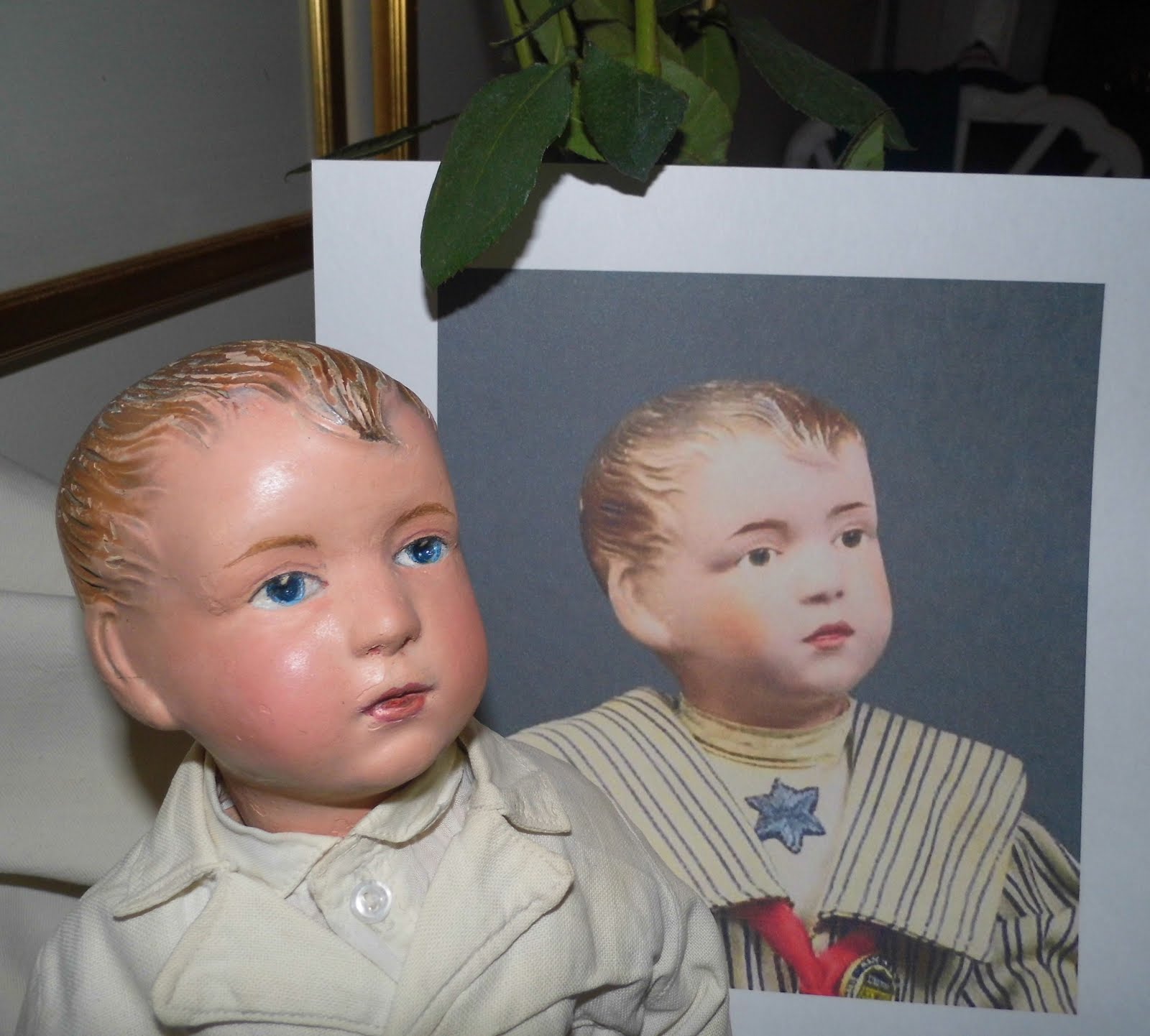My newest patient is a great little 13 inch Greiner or Greiner-type doll. Ludwig Greiner was born in Germany and emigrated to the US in the mid-19th century, settling in Philadelphia. On March 30th 1858 he received his patent for manufacturing Papier Mache dolls. The dolls were issued with a paper label, but many have lost them and are like this little one. You can see where the label was, but it is not longer there.
According to Lolly Yokum of Laurel Leaf Studios, who makes Greiner reproductions:
The paper mache recipe was one pound of white paper cooked and beaten, then add one pound each of dry Spanish whiting and rye flour, then add one ounce of glue... the heads were painted in oil and finished with varnish. This varnish often yellows. Most dolls have dark turquoise blue eyes however a few brown eyed dolls have been seen. Some dolls with glass eyes have been seen as well. The earliest dolls were all brunettes, the blonde haired dolls came later. A variety of hairstyles were made. A few of the later hair styles have been found with either blonde or brunette hair. If the paper label is missing the dolls can easily be dated by their hairstyle. The doll heads have been found on various cloth bodies. Most of these bodies have leather hands, either white or tan. Some were made by Jacob Lacmann (patent 1871). Since Jacob Lacmann was witness to Greiners will, it seems that the two were well acquainted. Some dolls have cloth legs, while others have a stocking/leather boot combination that is attributed to Mary Steuber (patented in 1878). http://laurelleaf.com/GreinerHistory.htm
I believe this little doll is a Greiner. I have dealt with a number of Greiners and they have a 'look' as well as the characteristics mentioned above. You can see the place on the back of her neck where the label was. At least so far as the Greiner dolls I have seen, the tag is always in the same place on the back of the shoulderplate.
The doll came to me in 'as is' condition with all of her 'issues' (no tip of the nose, missing face paint, one leather arm torn, leather fingers loose, etc), one hundred and fifty years of dirt and all. As I slowly and meticulously picked out the threads and loosened her clothing and removed it - I found one surprise. I knew the original owner's name was Elsie Jachowskie. Either Elsie or her daughter - a young lady with the interesting name of Frances Van Winkle - claimed her with a little piece of tape on her shift. Frances had a sweet little dolly!
I am going to take time with this doll to document the process of restoration from beginning to end - doll, clothing, and all. For this blog post I am going to show in photographs the doll's original condition along with what lay beneath and was exposed as I removed the clothing. Next time I will talk about the process of safely cleaning old doll clothes, with an emphasis on handling their old linen or cloth 'indescribables' or undies.
Here she is as received -
And last of all, France's dolly's 'issues':
Missing tip of the nose and face paint, though thank goodness her original eye paint is nearly intact and the lips are there. Careful restoration with preserve these.
This is where her leather arm detached. Bits of the leather have remained attached to the cloth body and some of the horsehair stuffing is caught in the threads.
Showing the missing arm.
Both hands are in roughly the same condition with loose fingers and seams.
The doll's feet have been mended over the years, with boot-like fabric being applied. I am not sure yet what I will do with this. I may leave it as it is as the mends were made by the original owner.
That's it for this time. Check back soon to see more of Frances, the little Greiner's (so named after her proud owner) makeover.






















































